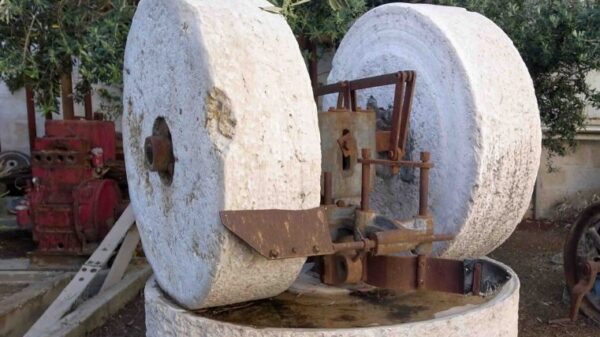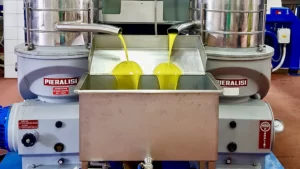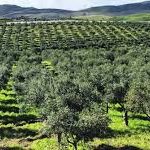
Most of the products on the market undergo ordinary filtration processes (wine, milk, fruit juices) or sieving (flours, sugars). This is because normally you don't buy white or red wine with the bottom, flour with processing residues, or orange juice with the waste of the peanuts.
This general rule, this obviousness, does not seem to apply when buying oil because often the consumer is made to believe that a cloudy extra virgin olive oil is better than a filtered one. And this murky product is often misnamed must o new oil, two terms stolen from oenology that have nothing to do with oil. The fact remains that an unfiltered oil is a cloudy oil, a product that has a significant quantity of suspended particles containing aromatic and phenolic substances, but also and above all substances whose oxidizing capacity is directly proportional to the degree of density, i.e. turbidity.
Let me explain better: if we remove these suspended particles from freshly made oil and place them on a plate, we will initially have a pleasant scent of oil. This kind of green slime, if fresh, can be used to fry or season pasta. But if we leave it on the plate, within a short time it will start to ferment and become rancid.
The same thing happens if we leave it in the oil and therefore do not carry out the filtration: initially the particles suspended in the oil do not create problems, but after a few months the cloudiness will settle on the bottom and begin to decompose, giving organoleptic sensations fermented, rotten, sludge, the correct name for this defect.
The mush takes a little longer to ferment if dispersed in oil, because this obviously protects the air and the agents that trigger decomposition. Therefore if the oil is consumed in a short time (no later than three/four months from production), under normal storage conditions no problems arise; but if it is intended to last longer it is essential to filter it immediately after production, using machinery that does not expose the oil to the air, similar to those used for wine. And don't think that passing through the decanter or separator is enough: even if the oil seems to have lost almost all its impurities, in order to conserve it correctly we still need to carry out a final filtration step.
The most used system is a panel filters. It is a machine derived from oenology, composed of a series of appropriately shaped plates usually in Moplen or Nylon, placed one close to the other to form a sort of package, between which sheets usually in compact cellulose are interposed , which have a variable porosity. A pump pushes the oil inside this package which frees itself from solid or semi-solid impurities because they are retained by the cardboard, which has smaller pores than them. And the residual aqueous phase is also removed thanks to the absorption of the cellulosic material which is hydrophilic.
Of courseand porosity – which is measured in microns – is chosen by the user, based on the more or less high level of filtration (and therefore brilliance) that it wants to obtain: the larger the pores, the milder but faster the filtration. The filter cards must be replaced when they are saturated: this is noticed because the oil injection pressure increases considerably due to the occlusion of the pores which fill with the impurities present in the oil. The pressure - which can vary approximately from 1 to 4 atmospheres - depends on the size of the machine and above all on the size of the pores: the larger they are, the less pressure is needed.
This kind of filtration basically happens in the absence of air because the oil, completely filling all the spaces of the machine, does not allow any contact with the external environment. There are also other types of suitable filters such as dust filters, inert gas filters, bag filters, lenticular module filters: the important thing is to filter and above all to avoid artisanal or anachronistic systems such as the funnel with cotton inside, useful only for oxygenate.
Sludge, how to recognize it – Technically, sludge is defined as the set of organoleptic sensations that the oil remains in contact with settling sludge in tanks or tanks, which have also undergone anaerobic fermentation processes. It is recognized quite easily as it has the smell of spoiled, fermented olives, with hints often halfway between brine and cheese. To simplify, you can compare it to the smell of industrial olive pâté that you buy at low cost at the supermarket.
If you want to test it, you can buy a pack and leave it open for about ten days near the stove. The result you will get if you dilute it in defect-free olive oil is very similar to sludge. Or you can look in the supermarket for a bottle of oil with a bottom (it's not that difficult to find) whose color turns towards brown: that is original sludge (be careful because the oils on the shelf of this kind often also have other defects).












